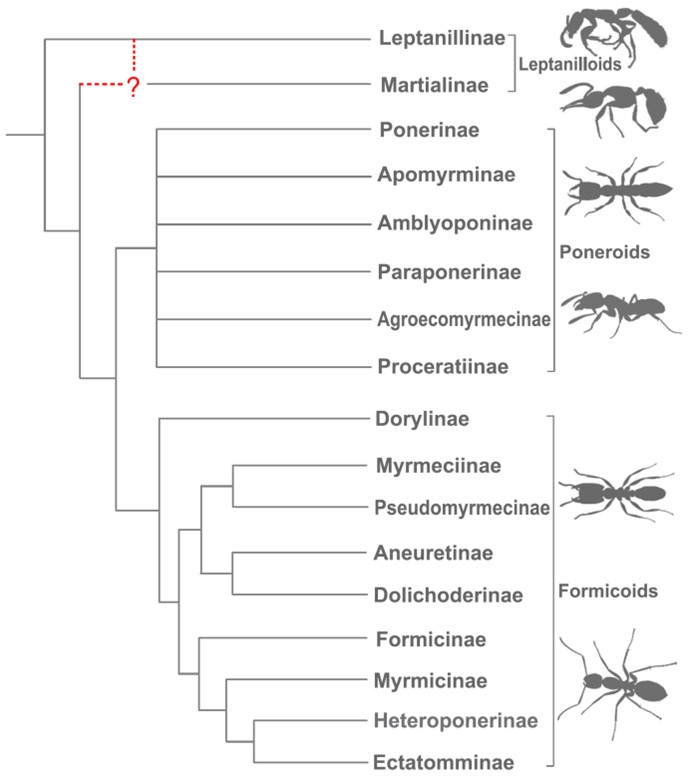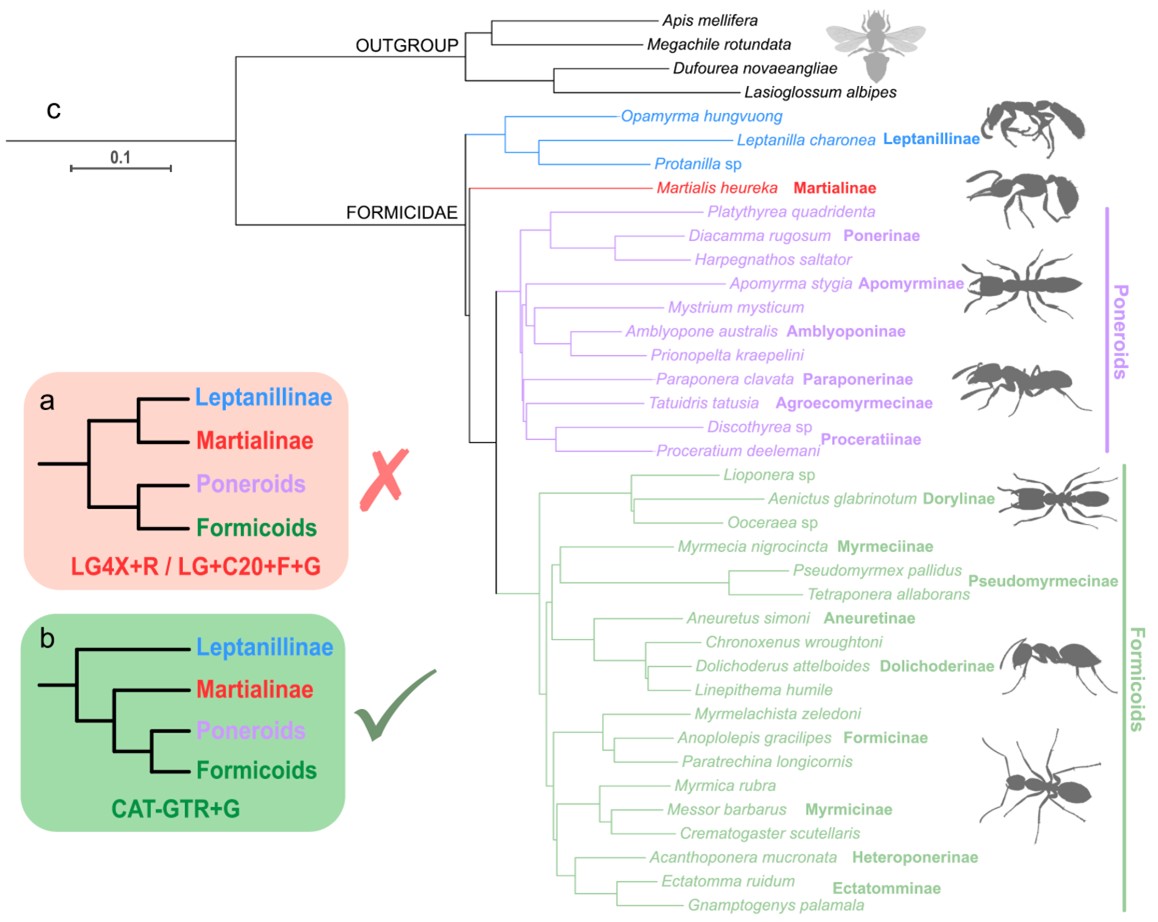Ants (Formicidae), known for their highly specialized sociality, are among the most widespread and ecologically dominant arthropods on Earth. Constructing a reliable ant evolutionary tree is crucial for understanding the evolution of their traits, species diversification, and biogeography. Over the past two decades, molecular phylogenetic studies and well-preserved Cretaceous ant fossils have greatly advanced the understanding of ant evolutionary history. However, discrepancies between different molecular datasets have caused inconsistencies in reconstructing ant phylogenies, leaving the foundational evolutionary relationships of ants unresolved.
Recently, Prof. CAI Chenyang, a researcher from the Nanjing Institute of Geology and Palaeontology, Chinese Academy of Sciences (NIGPAS), reanalyzed publicly available genomic data of ants, addressing long-standing controversies in ant phylogeny. By employing advanced model comparison methods, the team explored the reasons behind conflicts between datasets and proposed new insights into ant evolution. Their findings were published in Communications Biology.
Extant ants are divided into three major groups: leptanilloids, formicoids, and poneroids. Formicoids include most ant species, and their internal relationships have been clarified through molecular phylogenetic studies. However, the relationships within poneroids remain debated, with the most contentious issue being the phylogenetic position of the leptanilloids, which include two extant subfamilies: Leptanillinae and Martialinae. One species, Martialis heureka, has been at the center of this debate.
Martialis heurekawas first discovered in the Amazon rainforest and was placed in a separate subfamily, Martialinae, due to its unique combination of primitive and distinctive traits. Since its discovery, its precise evolutionary placement has been contested. Earlier studies suggested that Martialis heureka might be the sister group to all other ant subfamilies. However, subsequent genomic studies argued that it is closely related to the Leptanillinae.
By reanalyzing several existing datasets and applying the latest site-heterogeneous models (CAT-GTR), which account for functional constraints on amino acid mutations, Prof. Cai arrived at a conclusion that differs from the prevailing view. His research revealed that Martialis heureka is the sister group to all ants except the Leptanillinae, finally resolving this long-standing debate.
The newly constructed backbone phylogeny of ants provides a solid foundation for understanding the evolution of ant traits, biogeography, and the ecology of early ants. The study also suggested that the morphological similarities between modern Martian ants and leptanillines may result from convergent evolution due to their adaptation to subterranean environments.
This research was supported by the National Natural Science Foundation of China and the Second Tibetan Plateau Scientific Expedition and Research Program.
Reference: Cai Chenyang (2024) Ant backbone phylogeny resolved by modellingcompositional heterogeneity among sites ingenomic data. Communications Biology 7: 106. https://doi.org/10.1038/s42003-024-05793-7.

Fig.1 The evolutionary relationships among the extant ant subfamilies, with the phylogenetic position of Martialis heurekaunresolved. (Image by NIGPAS)

Fig.2 Phylogenomics resolves the evolutionary position of Martialis heureka and clarifies the backbone phylogeny of ants. (Image by NIGPAS)
Download:
